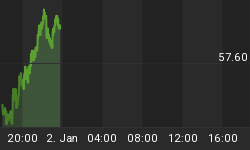For most people, it's hard to imagine a day going by without using the internet. Without it, you wouldn't be reading this. It's estimated that nearly 4.8 billion people, or about 61% of the world's population, currently have internet access.
With such a large portion of the world depending on the internet for so many aspects of their lives, studying trends in web traffic can provide a lot of valuable insights. Web analytics company SimilarWeb has done just that in its recently released 2020 Digital Trends report. Many of the top digital trends aren't too surprising, but are interesting to analyze further nonetheless.
Global web traffic continues its steady increase, with the total traffic to the top 100 websites averaging 223 billion monthly visits last year. This represents growth of 8.0% and 11.8% from 2018 and 2017, respectively. Mobile traffic continues to outgrow desktop traffic, with mobile traffic now representing 52% of total traffic. Mobile traffic has grown 30% since 2017, while desktop traffic has declined 3% over the same period.
Just like the gains in the S&P 500 are increasingly driven by a few stocks, the same can be said about web traffic for the top 100 websites. The top ten websites saw a 10.7% increase in traffic last year compared to a 2.3% increase for the remaining 90. Google, YouTube, Facebook, Baidu and Wikipedia are the top five most popular websites, with Amazon, Twitter and Instagram following. Thankfully for Facebook it acquired Instagram, because Facebook's traffic fell 7% from 2018 and nearly 20% from 2017.
As the United States total household debt surpassed $14 trillion last year for the first time, web traffic to shopping websites shows that's not all too surprising. All nine online shopping categories showed growth last year, with Amazon receiving 69% of total shopping traffic since 2017. After jumping nearly 12% from 2017 to 2018, daily web traffic during the week of Black Friday actually declined 0.1% over the last year. Interestingly, daily web traffic during the week of Amazon's Prime Day, which is in July, jumped more than 8% over the last year after declining by 4% from 2017 to 2018. Related: Iran's Space Program Hits Another Snag
One of the not-so-surprising findings in the report is that news publishers are having a very difficult time. Traffic to the top 100 media websites dropped 5.3% over the last year and 7% since 2017. Finance and Business and Women's Interest are the only two categories that have seen increases in web traffic. Interestingly, websites that are left- or right-leaning have seen traffic grow while those that are politically centered have seen traffic fall.
Web traffic to the top 100 finance websites was essentially flat last year. Traffic to cryptocurrency websites jumped in 2017 as they hit all-time highs, only to subsequently fall the last two years. While "too big to fail" banks have shown essentially flat web traffic, which is expected, there's been a notable increase in traffic to fintech companies such as mobile only banks, personal financial management apps and payment apps.
With so much time spent on the internet these days, analyzing web traffic trends is an invaluable resource to see what is going on in the world. It will be interesting to see how these trends change in the years to come and the implications they'll have on society and the economy.
By Zerohedge.com
More Top Reads From Safehaven.com:
















